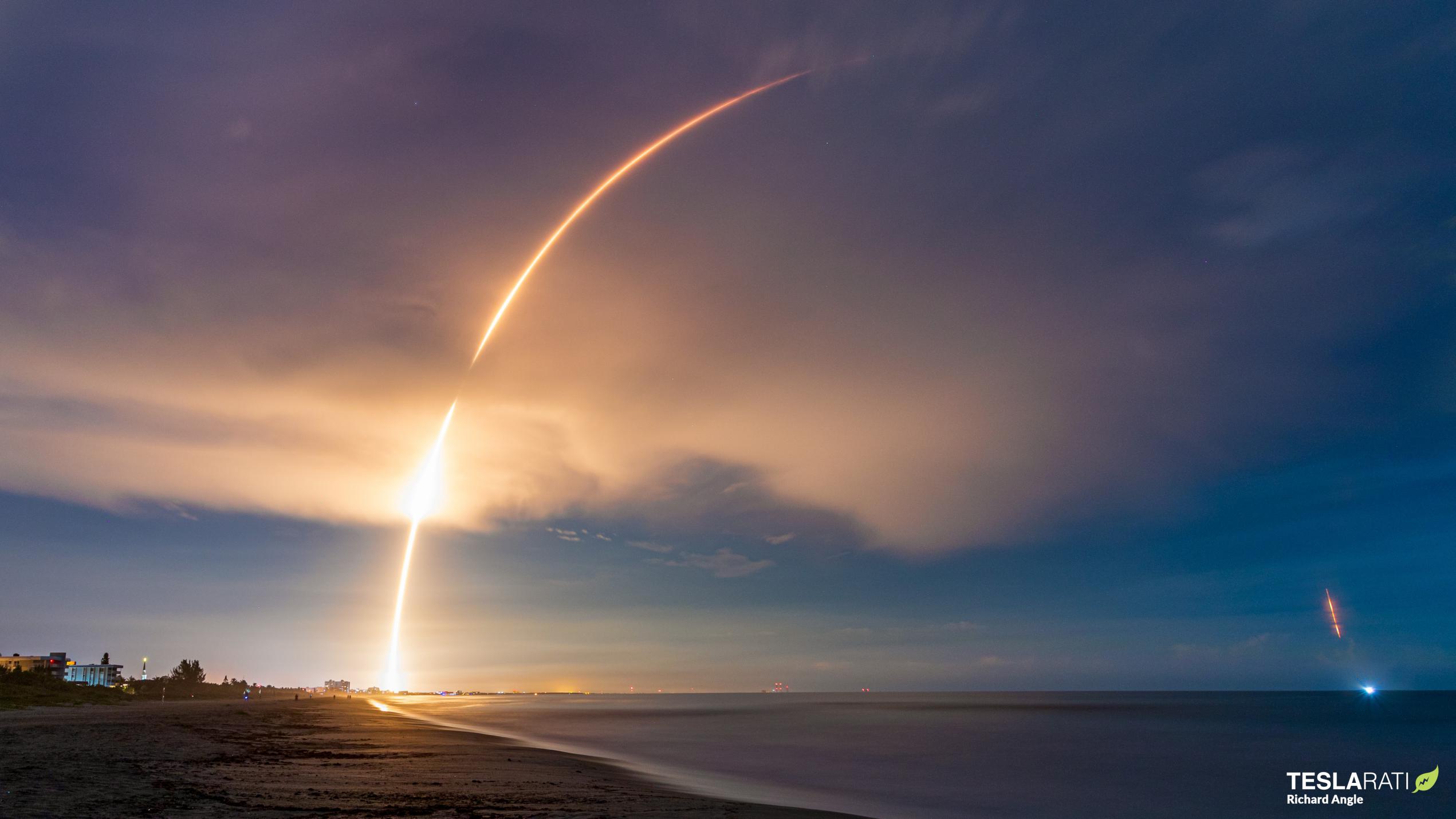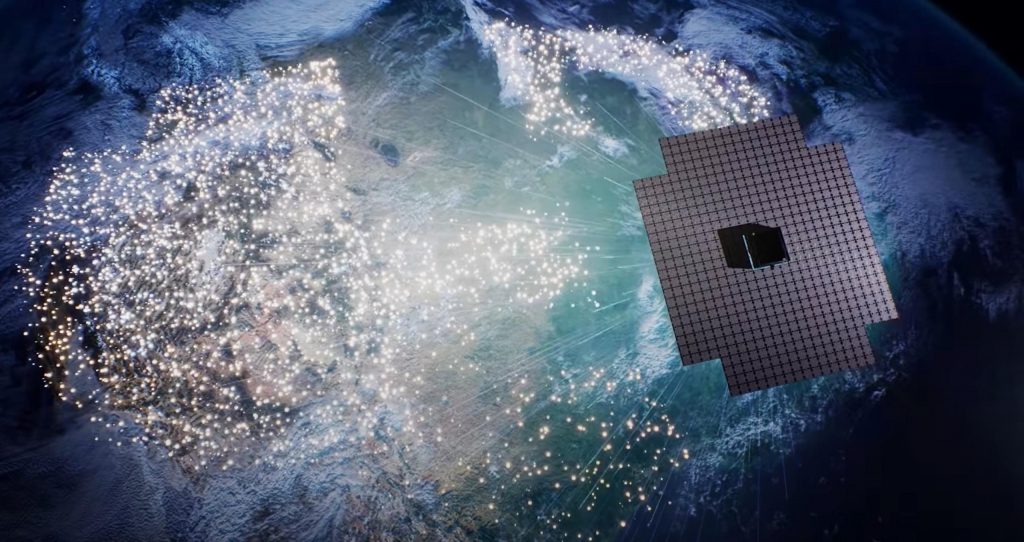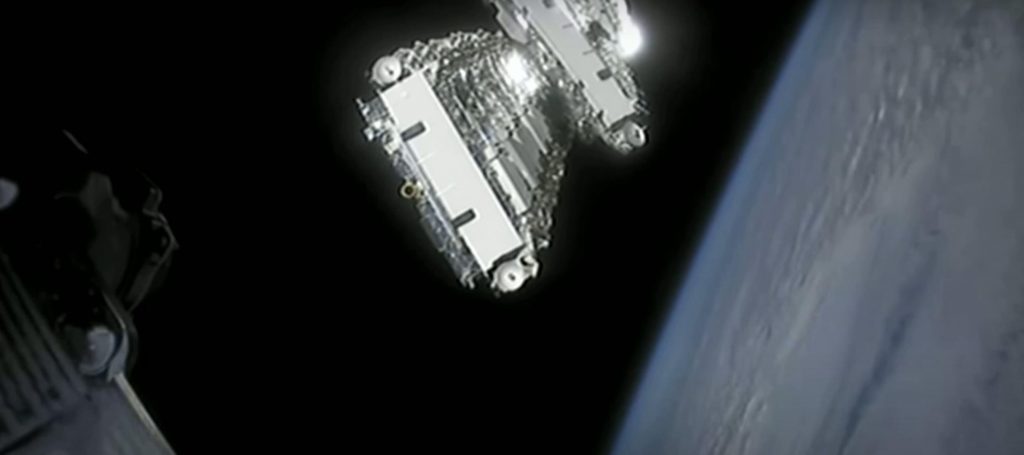

News
SpaceX launches 52nd Falcon 9 rocket in 52 weeks
SpaceX has completed its 52nd successful Falcon 9 launch in 52 weeks, sustaining an average cadence of one launch per week for a full 12 months.
Simultaneously, the Starlink 4-2 rideshare mission set a new record for Falcon 9 booster reuse, marked SpaceX’s 150th consecutively successful launch, and was one of the most complex commercial launches it has ever performed.
In addition to 34 new Starlink V1.5 satellites that joined almost 3000 other working SpaceX spacecraft in orbit, Starlink 4-2 deployed the company’s largest rideshare payload yet – AST SpaceMobile’s 1.5-ton (~3300 lb) BlueWalker 3 communications satellite.
Falcon 9 lifted off on schedule with the combined 12-ton (~26,500 lb) payload safely secured inside its composite payload fairing at 9:20 pm EDT (01:20 UTC) on Saturday, September 10th. Tasked with lifting the rocket’s expendable upper stage, recoverable fairing, and payload most of the way out of Earth’s atmosphere was Falcon 9 booster B1058, a nine-engine first stage that debuted by launching two NASA astronauts in May 2020.
28 months later, B1058 lifted off with Starlink 4-2 and BlueWalker 3 on its 14th spaceflight and orbital-class launch, breaking Falcon 9’s booster reuse record. The rocket performed no differently than it had every time previously, burning for a bit less than three minutes before deploying the upper stage and returning to Earth. About nine minutes after liftoff, B1058 safely touched down on drone ship A Shortfall Of Gravitas (ASOG), likely setting the booster up to break its own record before the end of 2022. With 13 launches already under their belts, boosters B1051 and B1060 will likely follow B1058 past the same 14-flight milestone in the near future.
Once free from the booster, Falcon 9’s expendable upper stage kicked off SpaceX’s most complex commercial launch ever. Measuring about six minutes long, the first and longest burn brought the second stage and payload into an elliptical orbit a few hundred kilometers above Earth’s surface. A second burn followed about 45 minutes after liftoff, raising the low end of that ellipse to deploy BlueWalker 3 into a circular orbit around 500 kilometers (~310 mi). Using a massive antenna, AST SpaceMobile’s first large satellite prototype will eventually attempt to directly communicate with mobile phones to provide a level of connectivity equivalent to 5G/LTE – all from space.
Once free of its rideshare payload, the focus shifted to Starlink. In theory, SpaceX could have taken the easy way out and significantly simplified the mission by deploying all 34 satellites at the same altitude as BlueWalker 3, simultaneously allowing them to reach their operational 540-kilometer (~336 mi) orbits in days instead of months. Instead, SpaceX pursued an exceptionally complex mission requiring five burns from Falcon 9’s upper stage.
After deploying BlueWalker 3, Falcon 9 S2 lowered one end of its orbit at around T+67 minutes, followed by a fourth burn to lower the other end almost two hours after liftoff. The upper stage then spun up end over end and eventually released all 34 Starlink satellites at an altitude of ~335 kilometers (~208 mi), where debris and faulty satellites will take days – rather than years – to reenter Earth’s atmosphere and burn up.


While SpaceX doesn’t confirm post-payload operations, Falcon 9 S2 was also scheduled to perform a fifth and final burn to quickly deorbit itself, ensuring that the mission only produced five pieces of benign debris. At their very low orbits, those five pieces (four ‘tensioning rods’ and the BlueWalker 3 payload adapter) will pose next to no threat to other spacecraft or rockets and should reenter within a few weeks.
Starlink 4-2 was SpaceX’s 52nd successful Falcon 9 launch since September 14th, 2021, meaning that the company has technically already achieved CEO Elon Musk’s goal of 52 launches in one year – albeit not a calendar year. Perhaps even more impressive, the mission was SpaceX’s 150th consecutively successful Falcon launch. No other single rocket (Falcon 9) or rocket family (Falcon) has launched more times in a row without failure.
Finally, Starlink 4-2 was SpaceX’s 42nd launch of 2022. If the company continues its average cadence over the last three months, it could end 2022 having completed more than 60 Falcon launches in one calendar year.
Elon Musk
Tesla reveals it is using AI to make factories more sustainable: here’s how
Tesla is using AI in its Gigafactory Nevada factory to improve HVAC efficiency.

Tesla has revealed in its Extended Impact Report for 2024 that it is using Artificial Intelligence (AI) to enable its factories to be more sustainable. One example it used was its achievement of managing “the majority of the HVAC infrastructure at Gigafactory Nevada is now AI-controlled” last year.
In a commitment to becoming more efficient and making its production as eco-friendly as possible, Tesla has been working for years to find solutions to reduce energy consumption in its factories.
For example, in 2023, Tesla implemented optimization controls in the plastics and paint shops located at Gigafactory Texas, which increased the efficiency of natural gas consumption. Tesla plans to phase out natural gas use across its factories eventually, but for now, it prioritizes work to reduce emissions from that energy source specifically.
It also uses Hygrometric Control Logic for Air Handling Units at Giafactory Berlin, resulting in 17,000 MWh in energy savings each year. At Gigafactory Nevada, Tesla saves 9.5 GWh of energy through the use of N-Methylpyrrolidone refineries when extracting critical raw material.
Perhaps the most interesting way Tesla is conserving energy is through the use of AI at Gigafactory Nevada, as it describes its use of AI to reduce energy demand:
“In 2023, AI Control for HVAC was expanded from Nevada and Texas to now include our Berlin-Brandenburg and Fremont factories. AI Control policy enables HVAC systems within each factory to work together to process sensor data, model factory dynamics, and apply control actions that safely minimize the energy required to support production. In 2024, this system achieved two milestones: the majority of HVAC infrastructure at Gigafactory Nevada is now AI-controlled, reducing fan and thermal energy demand; and the AI algorithm was extended to manage entire chiller plants, creating a closed-loop control system that optimizes both chilled water consumption and the energy required for its generation, all while maintaining factory conditions.”
Tesla utilizes AI Control “primarily on systems that heat or cool critical factory production spaces and equipment.” AI Control communicates with the preexisting standard control logic of each system, and any issues can be resolved by quickly reverting back to standard control. There were none in 2024.
Tesla says that it is utilizing AI to drive impact at its factories, and it has proven to be a valuable tool in reducing energy consumption at one of its facilities.
Elon Musk
Tesla analysts believe Musk and Trump feud will pass
Tesla CEO Elon Musk and U.S. President Donald Trump’s feud shall pass, several bulls say.

Tesla analysts are breaking down the current feud between CEO Elon Musk and U.S. President Donald Trump, as the two continue to disagree on the “Big Beautiful Bill” and its impact on the country’s national debt.
Musk, who headed the Department of Government Efficiency (DOGE) under the Trump Administration, left his post in May. Soon thereafter, he and President Trump entered a very public and verbal disagreement, where things turned sour. They reconciled to an extent, and things seemed to be in the past.
However, the second disagreement between the two started on Monday, as Musk continued to push back on the “Big Beautiful Bill” that the Trump administration is attempting to sign into law. It would, by Musk’s estimation, increase spending and reverse the work DOGE did to trim the deficit.
Every member of Congress who campaigned on reducing government spending and then immediately voted for the biggest debt increase in history should hang their head in shame!
And they will lose their primary next year if it is the last thing I do on this Earth.
— Elon Musk (@elonmusk) June 30, 2025
President Trump has hinted that DOGE could be “the monster” that “eats Elon,” threatening to end the subsidies that SpaceX and Tesla receive. Musk has not been opposed to ending government subsidies for companies, including his own, as long as they are all abolished.
How Tesla could benefit from the ‘Big Beautiful Bill’ that axes EV subsidies
Despite this contentious back-and-forth between the two, analysts are sharing their opinions now, and a few of the more bullish Tesla observers are convinced that this feud will pass, Trump and Musk will resolve their differences as they have before, and things will return to normal.
ARK Invest’s Cathie Wood said this morning that the feud between Musk and Trump is another example of “this too shall pass:”
BREAKING: CATHIE WOOD SAYS — ELON AND TRUMP FEUD “WILL PASS” 👀 $TSLA
She remains bullish ! pic.twitter.com/w5rW2gfCkx
— TheSonOfWalkley (@TheSonOfWalkley) July 1, 2025
Additionally, Wedbush’s Dan Ives, in a note to investors this morning, said that the situation “will settle:”
“We believe this situation will settle and at the end of the day Musk needs Trump and Trump needs Musk given the AI Arms Race going on between the US and China. The jabs between Musk and Trump will continue as the Budget rolls through Congress but Tesla investors want Musk to focus on driving Tesla and stop this political angle…which has turned into a life of its own in a roller coaster ride since the November elections.”
Tesla shares are down about 5 percent at 3:10 p.m. on the East Coast.
Elon Musk
Tesla scrambles after Musk sidekick exit, CEO takes over sales
Tesla CEO Elon Musk is reportedly overseeing sales in North America and Europe, Bloomberg reports.

Tesla scrambled its executives around following the exit of CEO Elon Musk’s sidekick last week, Omead Afshar. Afshar was relieved of his duties as Head of Sales for both North America and Europe.
Bloomberg is reporting that Musk is now overseeing both regions for sales, according to sources familiar with the matter. Afshar left the company last week, likely due to slow sales in both markets, ending a seven-year term with the electric automaker.
Tesla’s Omead Afshar, known as Elon Musk’s right-hand man, leaves company: reports
Afshar was promoted to the role late last year as Musk was becoming more involved in the road to the White House with President Donald Trump.
Afshar, whose LinkedIn account stated he was working within the “Office of the CEO,” was known as Musk’s right-hand man for years.
Additionally, Tom Zhu, currently the Senior Vice President of Automotive at Tesla, will oversee sales in Asia, according to the report.
It is a scramble by Tesla to get the company’s proven executives over the pain points the automaker has found halfway through the year. Sales are looking to be close to the 1.8 million vehicles the company delivered in both of the past two years.
Tesla is pivoting to pay more attention to the struggling automotive sales that it has felt over the past six months. Although it is still performing well and is the best-selling EV maker by a long way, it is struggling to find growth despite redesigning its vehicles and launching new tech and improvements within them.
The company is also looking to focus more on its deployment of autonomous tech, especially as it recently launched its Robotaxi platform in Austin just over a week ago.
However, while this is the long-term catalyst for Tesla, sales still need some work, and it appears the company’s strategy is to put its biggest guns on its biggest problems.
-

 Elon Musk1 day ago
Elon Musk1 day agoTesla investors will be shocked by Jim Cramer’s latest assessment
-

 News6 days ago
News6 days agoTesla Robotaxi’s biggest challenge seems to be this one thing
-

 News2 weeks ago
News2 weeks agoTesla’s Grok integration will be more realistic with this cool feature
-

 Elon Musk2 weeks ago
Elon Musk2 weeks agoElon Musk slams Bloomberg’s shocking xAI cash burn claims
-

 News2 weeks ago
News2 weeks agoTesla China roars back with highest vehicle registrations this Q2 so far
-

 News2 weeks ago
News2 weeks agoTexas lawmakers urge Tesla to delay Austin robotaxi launch to September
-

 News2 weeks ago
News2 weeks agoTesla dominates Cars.com’s Made in America Index with clean sweep
-

 Elon Musk1 week ago
Elon Musk1 week agoFirst Look at Tesla’s Robotaxi App: features, design, and more




















